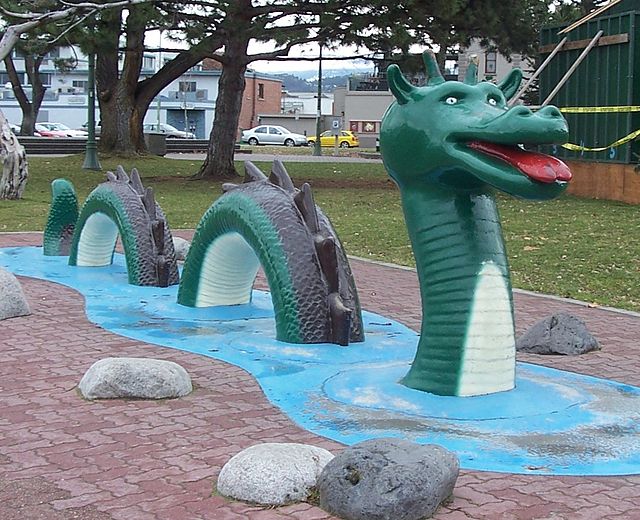In Canadian folklore, the Ogopogo is a lake monster said to inhabit Okanagan Lake in British Columbia, Canada. Some scholars have charted the entity's development from First Nations folklore and widespread water monster folklore motifs. The Ogopogo now plays a role in the commercial symbolism and media representation of the region.
Ogopogo
Sheet music cover
Ogopogo is said to inhabit Okanagan Lake
Otters, especially when swimming in a row, may be mistaken for a lake monster
Canadian folklore is the traditional material that Canadians pass down from generation to generation, either as oral literature or "by custom or practice". It includes songs, legends, jokes, rhymes, proverbs, weather lore, superstitions, and practices such as traditional food-making and craft-making. The largest bodies of folklore in Canada belong to the aboriginal and French-Canadian cultures. English-Canadian folklore and the folklore of recent immigrant groups have added to the country's folk.
Bill Reid's sculpture Raven and the First Men, showing part of a Haida creation myth. The Raven represents the Trickster figure common to many mythologies. The work is in the Museum of Anthropology at the University of British Columbia.
Depiction of La chasse-galerie (The Flying Canoe), a popular French-Canadian folktale. The coureur des bois/voyageurs were featured in the folklore of Quebec.
The Big Fiddle of the Ceilidh in Sydney, Nova Scotia. Canadian fiddle is a recognizable part of Maritime culture.
A wooden statue of folk hero Big Joe Mufferaw in Mattawa, Ontario. Mufferaw was based on the exploits of lumberjack Joseph Montferrand.








